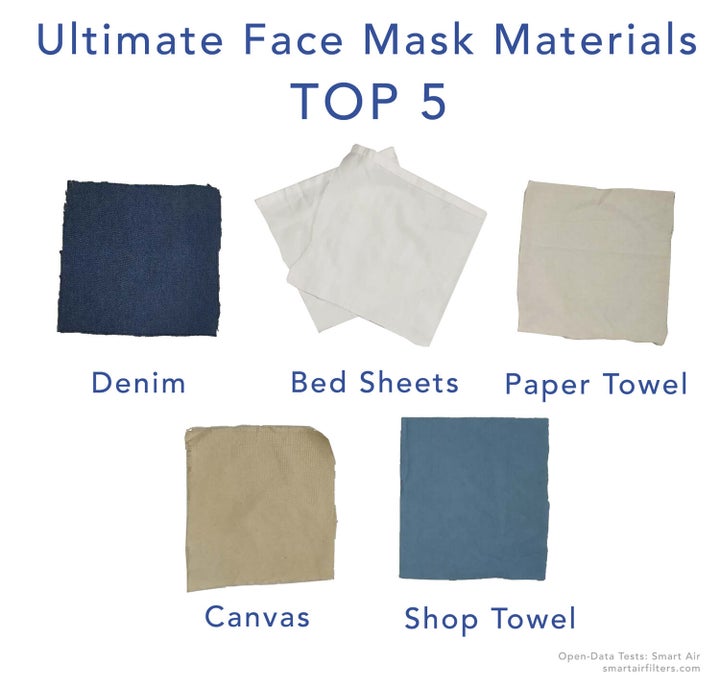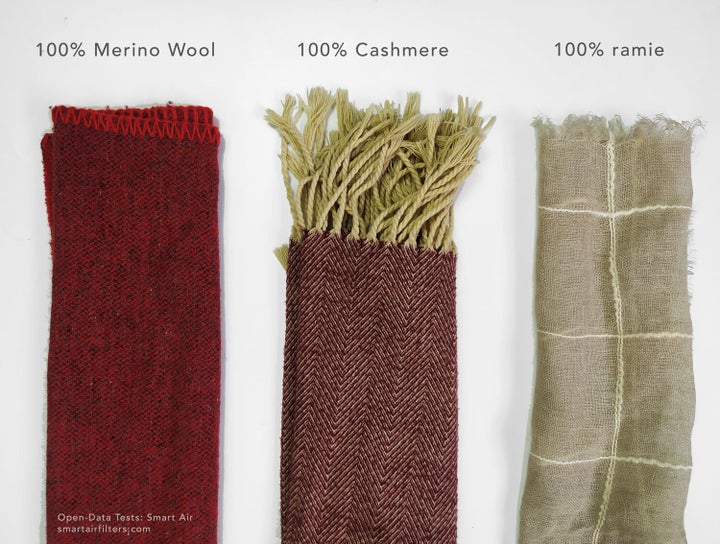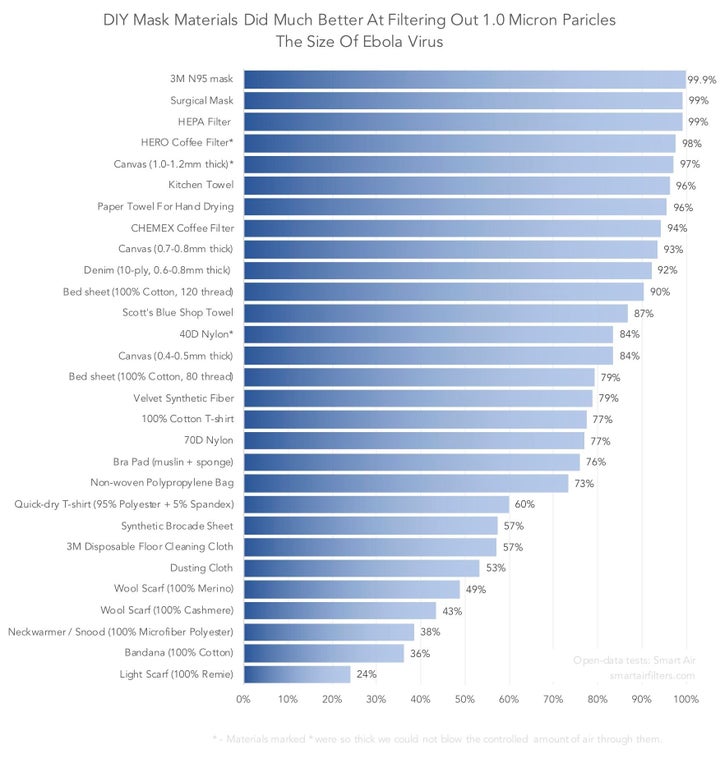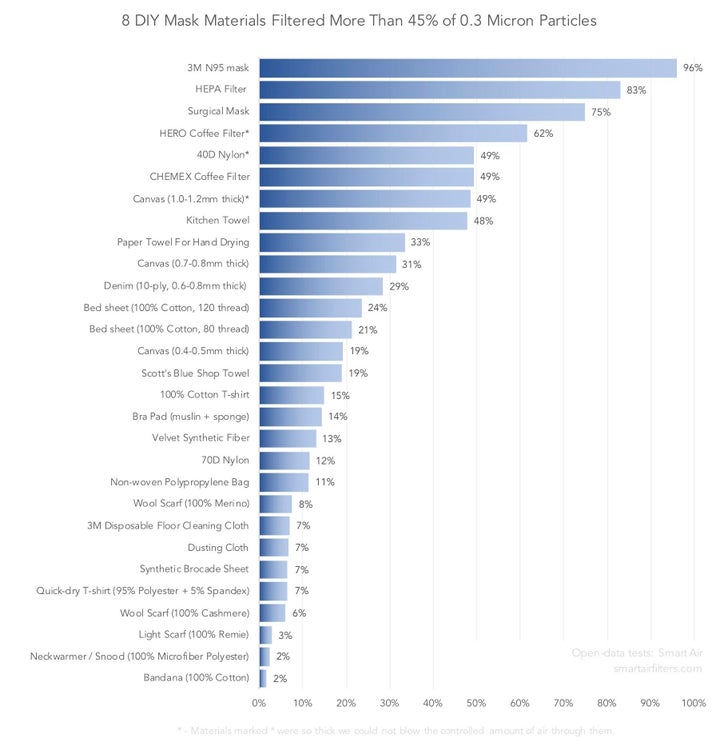With Canada’s chief public health officer, Dr. Theresa Tam, acknowledging that wearing a face mask can help stop the spread of COVID-19, Canadians are rushing to either make their own masks, or buy them from local businesses, which are pivoting to rush out masks as the demand for them climbs.
On April 6, Dr. Tam said that Canadians can use non-medical masks alongside practicing social distancing measures while they’re outside.
“Wearing a non-medical mask is an additional measure that you can take to protect others around you,” Tam said. "[A non-medical mask] can reduce the chance of your respiratory droplets coming into contact with others or landing on surfaces.” Tam reiterated that wearing a face mask doesn’t protect the person who is wearing it.
For those who are making their own, a new study of the best and worst materials for DIY face masks was just released.
Smart Air, a social enterprise and certified B-Corp that promotes cost-effective, data-backed air filters as a solution to indoor particulate air pollution, has released the results of their latest research on DIY face mask materials, in which they tested over 30 different materials ― including bra pads, coffee filters, pillow cases, electrostatic cloths, cotton T-shirts, wool, bed sheets, polyester, bandanas and more ― for their effectiveness in filtering coronavirus-sized microparticles, as well as their breathability.
Both those factors are vital, because while some materials may test high for filtration, they test low for breathability ― a mask you can’t actually breathe in isn’t exactly helpful to anyone.
Among the key takeaways: scarves tested among the least effective materials, while denim, canvas, and paper towels were among the best.

How the testing worked
Smart Air aimed to mimic the test setup used by Cambridge University researchers, known as a Henderson apparatus, in which a fan blows air and particles through the mask material. The materials were tested for their ability to filter large-sized (1 micron, similar to the size of the Ebola virus) and small-sized (0.3 micron, the size of the smallpox virus) particles and for their breathability factor. For reference, COVID-19 coronavirus particles measure 0.06-0.14 microns in size, but 5-10 microns when in droplets.

The testing was done to clear up some myths about which face masks are best for public health. Smart Air had previously released data before COVID-19 reached its peak, but the company said the findings were “incomplete.” Over the past several weeks, it tested more crucial materials the earlier study left out, as well as guidelines for variables like thread count.
“There is a huge demand for information worldwide right now about what makes a safe and effective DIY face mask, but there is also a lot of fear and misinformation,” Smart Air CEO and aeronautical engineer Paddy Robertson said in a press release. “By releasing this data, and continuing to be totally transparent about our methodology, we hope to help individuals, institutions and potentially even governments make good, data-backed decisions about how to make face masks that will actually protect them.”
Coffee filters are no longer recommended for DIY masks
The new study showed that while coffee filters are extremely effective at filtering microparticles, they score very poorly on the breathability scale, knocking them off the list of recommended DIY mask materials.
“Coffee filters, although very effective at filtering virus-sized particles, won’t make great masks,” Robertson said in the release. “They’re just too difficult to breathe through.”
Scarves failed the test, big time
“Trump’s suggestion of using scarves as face masks may not be the best choice,” Robertson said. “Our tests showed that the three scarves we tested scored consistently low on their ability to capture tiny particles. Perhaps Trump should check out our data and update the general public.”

The three scarves tested ― made of merino wool, cashmere and lightweight ramie (similar to linen) ― all captured fewer than 10 per cent of smallpox-sized particles. The worst scarf material – 100 per cent ramie – filtered just 2.8 per cent.
The best overall materials for DIY face masks
Based on a combination of breathability and filtration effectiveness, the study recommended denim, bed sheets (80-120 thread count), paper towels, canvas (0.4-0.5mm thick) and shop towels for homemade masks.
Keep in mind, however, that paper towels are not washable or reusable.
The 0.4-0.5mm thick canvas material ranked as being easier to breathe through than a surgical mask, while still performing fairly well at filtering particles. But if thick fabrics aren’t available to you, the study’s data showed that 100 per cent cotton T-shirts, layered up, are also still effective options for homemade masks. (More on this below.)
In general, natural materials are a better option than synthetic ones. Because synthetic fibres (like polyester) tend to be smooth, they don’t filter out particles as well as the rougher texture of natural fibres (like 100 per cent cotton).
What happens when you use multiple layers of a material?
Many DIY face masks incorporate at least two layers of fabric, and sometimes up to 16 or even 32 layers if you’re making multiple folds. So how does that increase the material’s effectiveness?
Testing in this study was done on one and two layers. Robertson told HuffPost, “Doubling the layers increased 0.3 micron efficiency from 2 per cent to 15 per cent, whilst also reducing breathability. It’s difficult to give an exact ‘formula’ for each material on how doubling layers increases effectiveness, as air resistance plays a major part. We want to work on this though.”
Robertson said Smart Air plans to continue its research and release a third edition of the study with more information on layering the materials.
Best materials for blocking large-size particles
The majority of materials tested in Smart Air’s study blocked more than 50 per cent of 1-micron particles, but some of the worst-scoring materials were the wool scarf, bandana (100 per cent cotton) and light scarf (keep in mind, these were each tested in a single layer ― increasing layers slightly increases how many particles can be blocked).

Best materials for blocking small-size particles
For 0.3-micron particles, Smart Air found “a much wider range in effectiveness.” The N95 mask, HEPA filter and surgical mask performed best, all capturing over 75 per cent of small particles. But in terms of household materials, the best blockers were Hero-brand coffee filters. In the study, only four other materials filtered more than 48 per cent of small particles: the 40D nylon, Chemex coffee filter, kitchen towel and canvas.

According to the study, “some materials were only slightly better than nothing.” The bandana, neck-warmer, scarves, cleaning cloths and 100 per cent cotton T-shirt (one layer) all captured less than 10 per cent of small particles.
No matter what your mask is made of, make sure to wear it responsibly
Whichever material you choose to make your mask from, and no matter how you choose to make it ― sewing, no-sew, folding ― it’s not a guaranteed protector against COVID-19.
Masks do not replace social distancing. While DIY face masks may be useful in situations like grocery stores and pharmacies where you cannot always stay six feet away from people, masks should not be used as a replacement for social distancing.
And remember: By covering your face in public, you are helping others to stay safe from anything you may be carrying. It’s more about their protection than your own.
With files from Chloe Tejada.
Also on HuffPost: